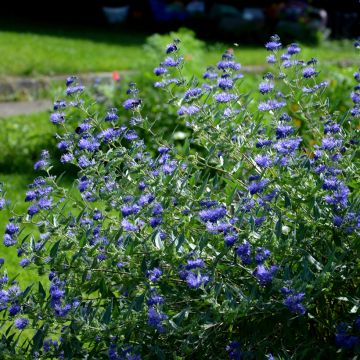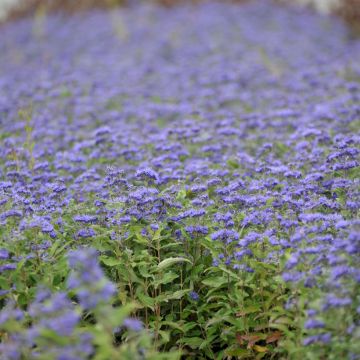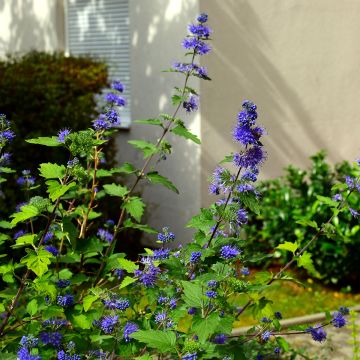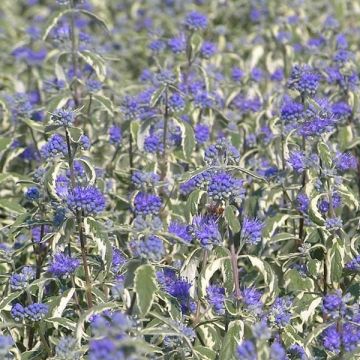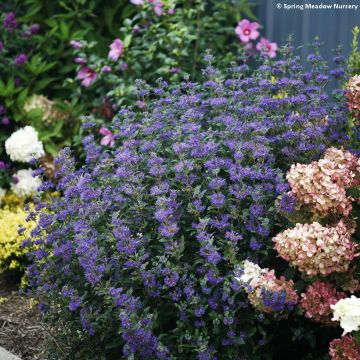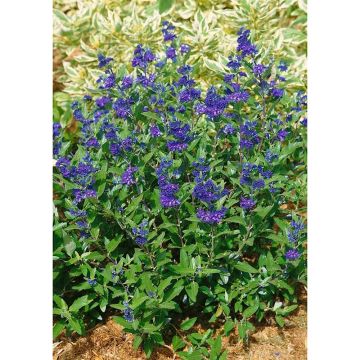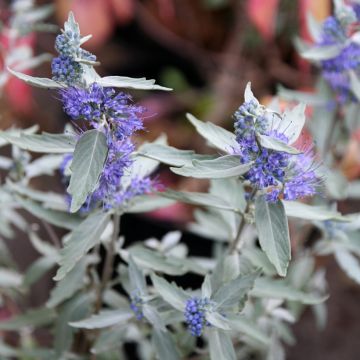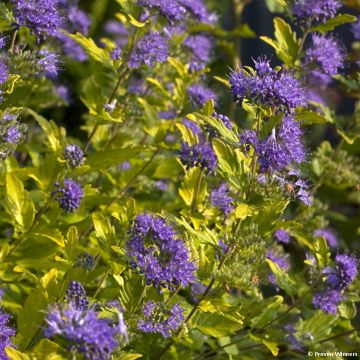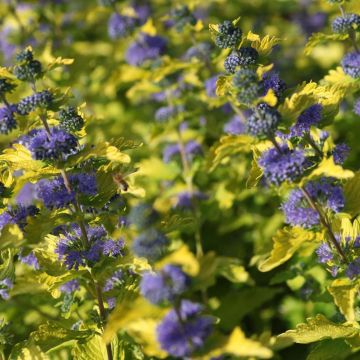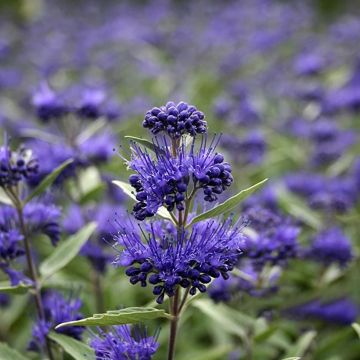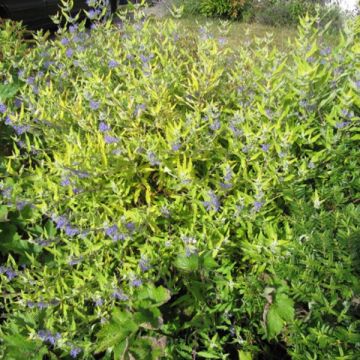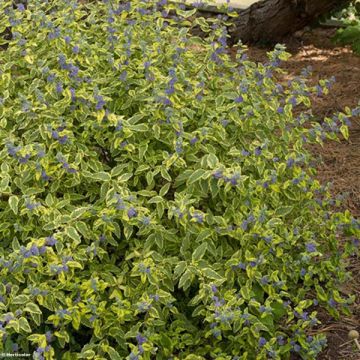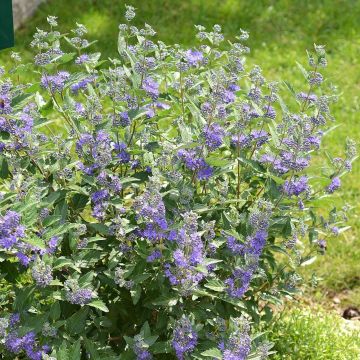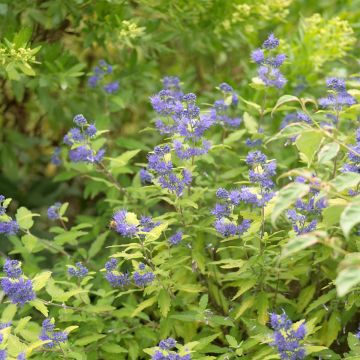Shipping country and language
Your country of residence may be:
Your country of residence is:
For a better user experience on our website, you can select:
Your shipping country:
Andorra
Austria
Belgium
Bulgaria
Canada
Chile
Croatia
Cyprus
Czechia
Denmark
Estonia
Finland
France
Germany
Greece
Hungary
Iceland
Ireland
Italy
Latvia
Lithuania
Luxembourg
Malta
Monaco
Netherlands
Poland
Portugal
Romania
Slovakia
Slovenia
Spain
Sweden
Switzerland
United Kingdom
We only deliver seed and bulb products to your country. If you add other products to your basket, they cannot be shipped.
Language:
French
German
Spanish
English
My Account
Hello
My wish lists
Plantfit
Log in / Register
Existing customer?
New customer?
Create an account to track your orders, access our customer service and, if you wish, make the most of our upcoming offers.
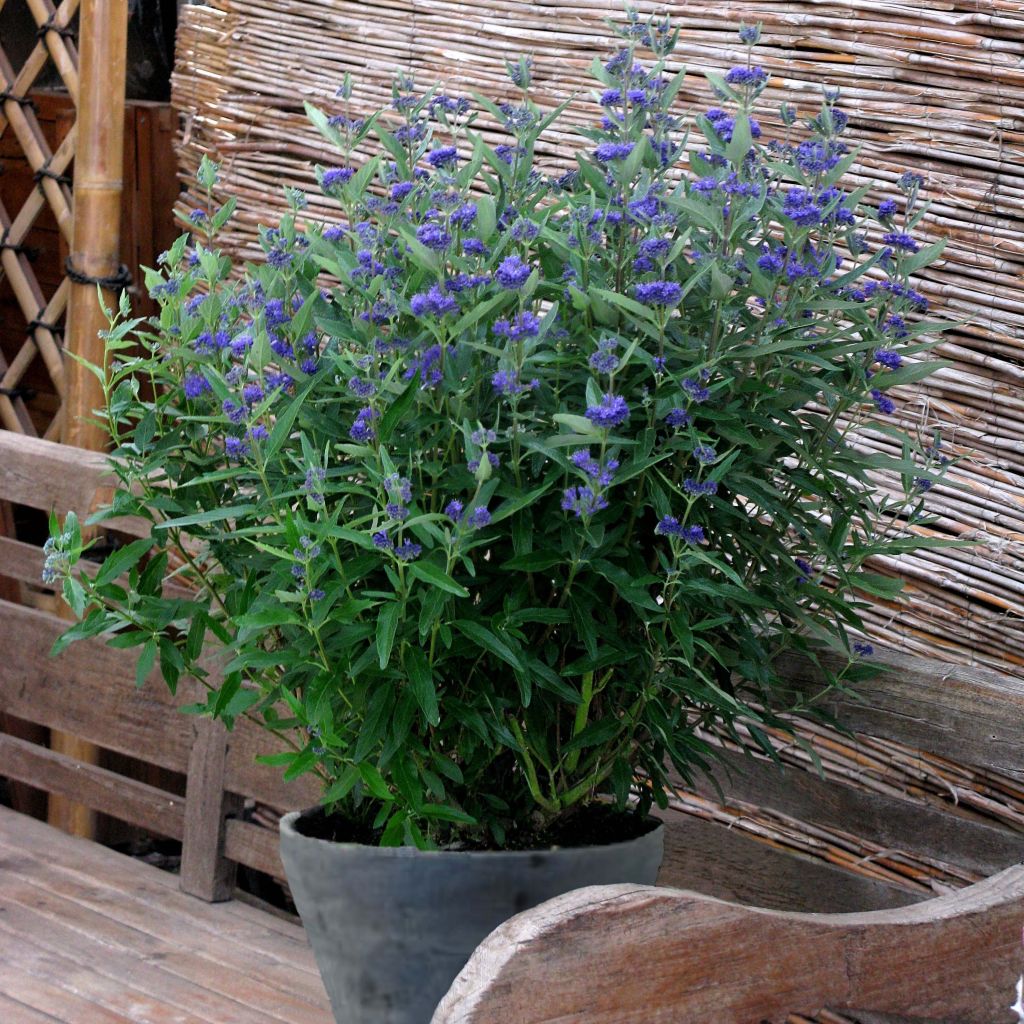

Caryopteris clandonensis Thetis - Bluebeard
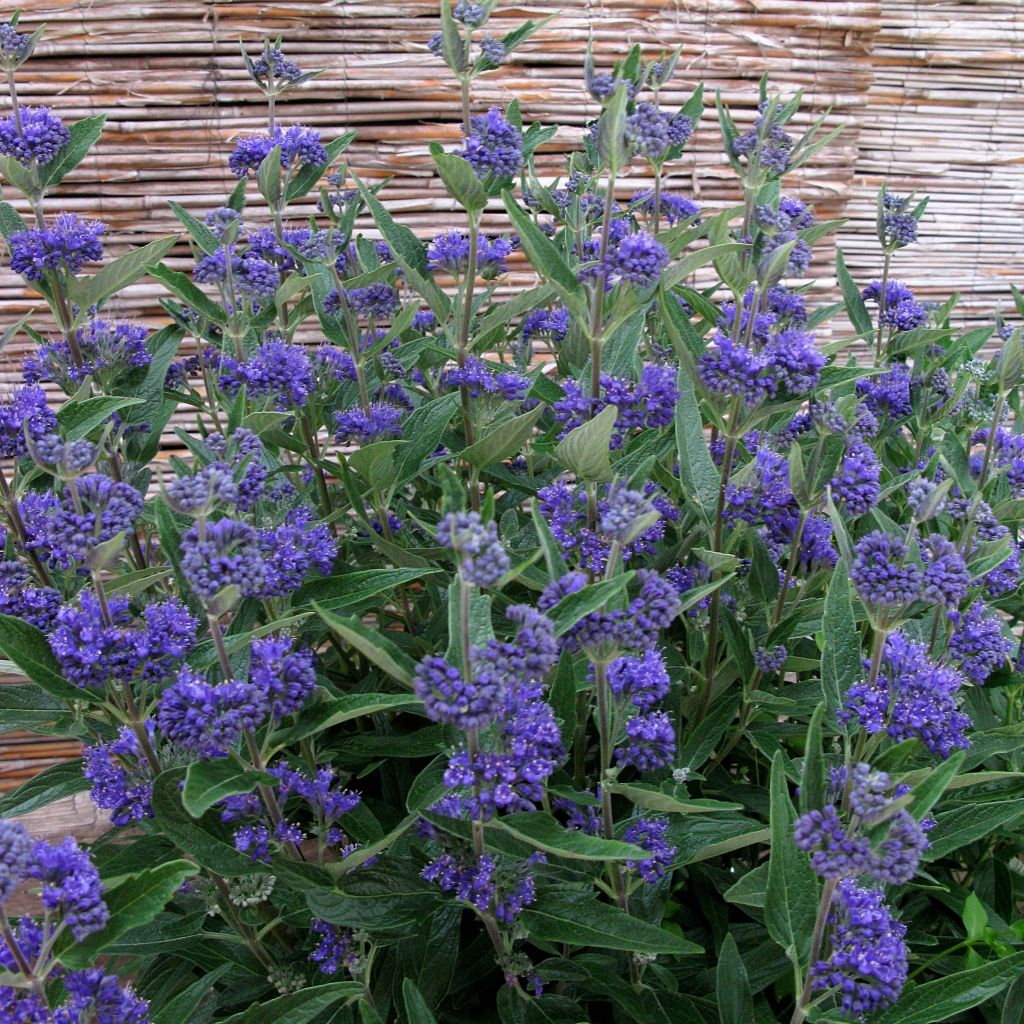

Caryopteris clandonensis Thetis - Bluebeard
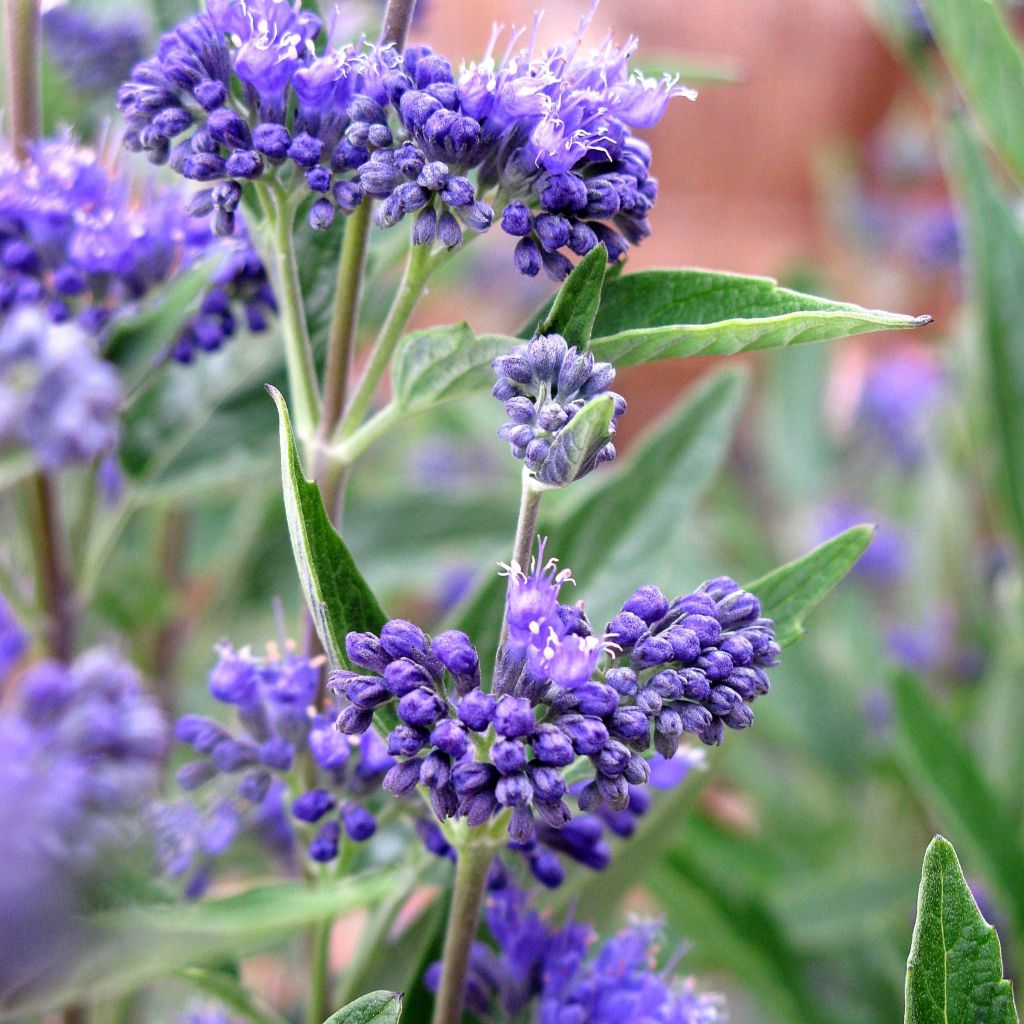

Caryopteris clandonensis Thetis - Bluebeard
Caryopteris clandonensis Thetis - Bluebeard
Caryopteris clandonensis Thetis®
Bluebeard, Blue Spirea, Blue Mist Shrub
Why not try an alternative variety in stock?
View all →Order in the next for dispatch today!
Dispatch by letter from 3,90 €.
Delivery charge from 5,90 € Oversize package delivery charge from 6,90 €.
More information
This item is not available in your country.
Shipping country:
Andorra
Austria
Belgium
Bulgaria
Canada
Chile
Croatia
Cyprus
Czechia
Denmark
Estonia
Finland
France
Germany
Greece
Hungary
Iceland
Ireland
Italy
Latvia
Lithuania
Luxembourg
Malta
Monaco
Netherlands
Poland
Portugal
Romania
Slovakia
Slovenia
Spain
Sweden
Switzerland
United Kingdom
Schedule delivery date,
and select date in basket
This plant carries a 24 months recovery warranty
More information
We guarantee the quality of our plants for a full growing cycle, and will replace at our expense any plant that fails to recover under normal climatic and planting conditions.
From 5,90 € for pickup delivery and 6,90 € for home delivery
Express home delivery from 8,90 €.
Would this plant suit my garden?
Set up your Plantfit profile →
Description
Caryopteris x clandonensis 'Thetis' is a cultivar appreciated for its generous flowering, later and longer in intense blue flower clusters, fading only after the first frosts! Its flowering lasts on average 10 days longer than other varieties. This deciduous bush has a bushy habit reaching a maximum height of 1m (3ft) and light, grey-green foliage that enhances the deep colour of its flowers. Quite hardy and drought-resistant, plant it in large groups, as a border against a wall or in a container in full sun in well-drained soil, even limestone or dry, preferably rich. It is the perfect species for creating easy-to-maintain flower beds and bringing spectacular colours to the garden when it is lacking.
The Caryopteris x clandonensis 'Thetis' is one of the hybrids obtained by crossing Caryopteris incana, an Asian bush called 'Bluebeard', and Caryopteris mongolica, hardier, native to colder regions of Mongolia and northern China. They all belong to the verbena family.
The variety 'Thetis' is cultivated for its particularly late and long flowering. With rapid growth, this bush forms a bushy clump reaching 1m (3ft) in height and 80cm (32in) in width. It blooms in the second half of summer and until the first frosts: from August to October. Its flower heads appear on the upper half of the year's branches. They are composed of countless small blue buds, gathered in large whorls or dense clusters arranged in a staggered manner. The buds open into small flowers of a fairly dark and intense blue, with prominent stamens. This flowering is particularly honey-producing and nectar-rich, and the bush is often visited by many colourful butterflies. The foliage, deciduous and absent in winter, is a collection of thin and triangular leaves, 3 to 5 cm (1 to 2in) long, aromatic, with irregularly toothed edges, arranged in an opposite manner on straight stems. They have a grey-green colour, with a silver underside. When crushed, they release an aroma with resinous notes.
The Caryopteris x clandonensis 'Thetis' is used as a border, in flower beds, and as a low hedge, in the company of summer-flowering shrubs that are just as undemanding as itself: Russian sage (Perovskia), bush cinquefoils, St. John's worts, catmints, Ceratostigma griffithii, lavenders, dwarf buddleias, perennial or shrubby salvias. In a dry garden with a more natural style, plant it with grasses and silver-leaved shrubs such as stipas and wormwoods. A very romantic scene can be created in late summer by combining the pink caryopteris with shrubby lavenders (Barnsley, Princesse de Ligne, Blue Bird), shrubby wormwoods, and asters. A group of 3 shrubs surrounding pastel repeat flowering roses look beautiful in September, as their flowers contrast gloriously. Also, place it in a beautiful pot on a patio or balcony, in a sheltered position.
Caryopteris clandonensis Thetis - Bluebeard in pictures


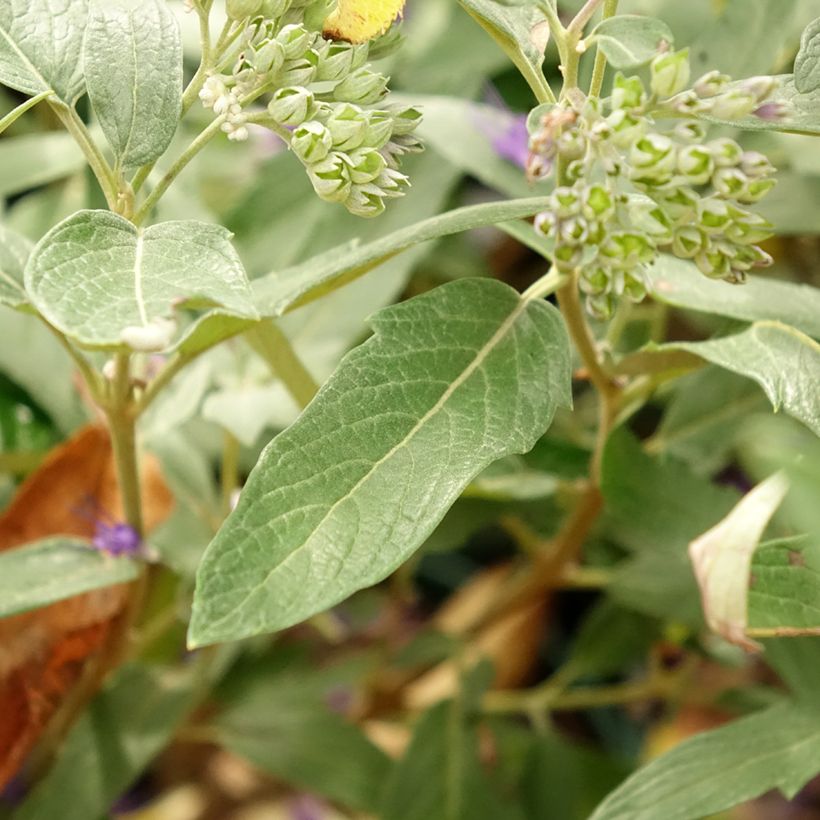



Plant habit
Flowering
Foliage
Botanical data
Caryopteris
clandonensis
Thetis®
Verbenaceae
Bluebeard, Blue Spirea, Blue Mist Shrub
Cultivar or hybrid
Planting and care
The Caryopteris are plants that thrive in sunny and well-drained soil. They can be planted early in autumn, or in spring in colder regions, in a very sunny location and in a light, well-drained soil, even stony or sandy, although reasonably deep. While caryopteris is not sensitive to limestone, it will be more beautiful in humus-rich soil. A waterlogged soil in winter will greatly harm its hardiness. In well-drained soil and in a sheltered position, this plant can tolerate temperatures of -15 to -20°C (5 to 1°F) for short periods, for example at the end of the night. In our colder regions, it is wiser to plant it against a south-facing wall. It should also be noted that plants grown in pots are more susceptible to cold than those planted in the ground. Prune in late winter or very early spring to maintain a compact habit and promote the appearance of flowers, on the new shoots of the year.
Planting period
Intended location
Care
This item has not been reviewed yet - be the first to leave a review about it.
Haven't found what you were looking for?
Hardiness is the lowest winter temperature a plant can endure without suffering serious damage or even dying. However, hardiness is affected by location (a sheltered area, such as a patio), protection (winter cover) and soil type (hardiness is improved by well-drained soil).

Photo Sharing Terms & Conditions
In order to encourage gardeners to interact and share their experiences, Promesse de fleurs offers various media enabling content to be uploaded onto its Site - in particular via the ‘Photo sharing’ module.
The User agrees to refrain from:
- Posting any content that is illegal, prejudicial, insulting, racist, inciteful to hatred, revisionist, contrary to public decency, that infringes on privacy or on the privacy rights of third parties, in particular the publicity rights of persons and goods, intellectual property rights, or the right to privacy.
- Submitting content on behalf of a third party;
- Impersonate the identity of a third party and/or publish any personal information about a third party;
In general, the User undertakes to refrain from any unethical behaviour.
All Content (in particular text, comments, files, images, photos, videos, creative works, etc.), which may be subject to property or intellectual property rights, image or other private rights, shall remain the property of the User, subject to the limited rights granted by the terms of the licence granted by Promesse de fleurs as stated below. Users are at liberty to publish or not to publish such Content on the Site, notably via the ‘Photo Sharing’ facility, and accept that this Content shall be made public and freely accessible, notably on the Internet.
Users further acknowledge, undertake to have ,and guarantee that they hold all necessary rights and permissions to publish such material on the Site, in particular with regard to the legislation in force pertaining to any privacy, property, intellectual property, image, or contractual rights, or rights of any other nature. By publishing such Content on the Site, Users acknowledge accepting full liability as publishers of the Content within the meaning of the law, and grant Promesse de fleurs, free of charge, an inclusive, worldwide licence for the said Content for the entire duration of its publication, including all reproduction, representation, up/downloading, displaying, performing, transmission, and storage rights.
Users also grant permission for their name to be linked to the Content and accept that this link may not always be made available.
By engaging in posting material, Users consent to their Content becoming automatically accessible on the Internet, in particular on other sites and/or blogs and/or web pages of the Promesse de fleurs site, including in particular social pages and the Promesse de fleurs catalogue.
Users may secure the removal of entrusted content free of charge by issuing a simple request via our contact form.
The flowering period indicated on our website applies to countries and regions located in USDA zone 8 (France, the United Kingdom, Ireland, the Netherlands, etc.)
It will vary according to where you live:
- In zones 9 to 10 (Italy, Spain, Greece, etc.), flowering will occur about 2 to 4 weeks earlier.
- In zones 6 to 7 (Germany, Poland, Slovenia, and lower mountainous regions), flowering will be delayed by 2 to 3 weeks.
- In zone 5 (Central Europe, Scandinavia), blooming will be delayed by 3 to 5 weeks.
In temperate climates, pruning of spring-flowering shrubs (forsythia, spireas, etc.) should be done just after flowering.
Pruning of summer-flowering shrubs (Indian Lilac, Perovskia, etc.) can be done in winter or spring.
In cold regions as well as with frost-sensitive plants, avoid pruning too early when severe frosts may still occur.
The planting period indicated on our website applies to countries and regions located in USDA zone 8 (France, United Kingdom, Ireland, Netherlands).
It will vary according to where you live:
- In Mediterranean zones (Marseille, Madrid, Milan, etc.), autumn and winter are the best planting periods.
- In continental zones (Strasbourg, Munich, Vienna, etc.), delay planting by 2 to 3 weeks in spring and bring it forward by 2 to 4 weeks in autumn.
- In mountainous regions (the Alps, Pyrenees, Carpathians, etc.), it is best to plant in late spring (May-June) or late summer (August-September).
The harvesting period indicated on our website applies to countries and regions in USDA zone 8 (France, England, Ireland, the Netherlands).
In colder areas (Scandinavia, Poland, Austria...) fruit and vegetable harvests are likely to be delayed by 3-4 weeks.
In warmer areas (Italy, Spain, Greece, etc.), harvesting will probably take place earlier, depending on weather conditions.
The sowing periods indicated on our website apply to countries and regions within USDA Zone 8 (France, UK, Ireland, Netherlands).
In colder areas (Scandinavia, Poland, Austria...), delay any outdoor sowing by 3-4 weeks, or sow under glass.
In warmer climes (Italy, Spain, Greece, etc.), bring outdoor sowing forward by a few weeks.
